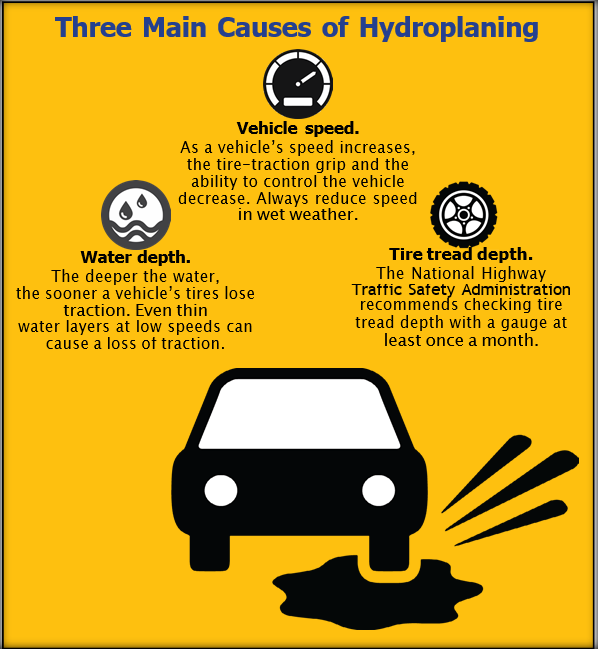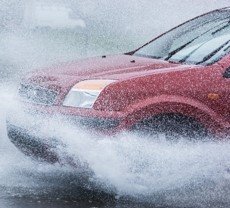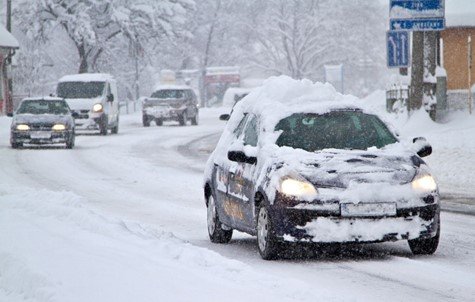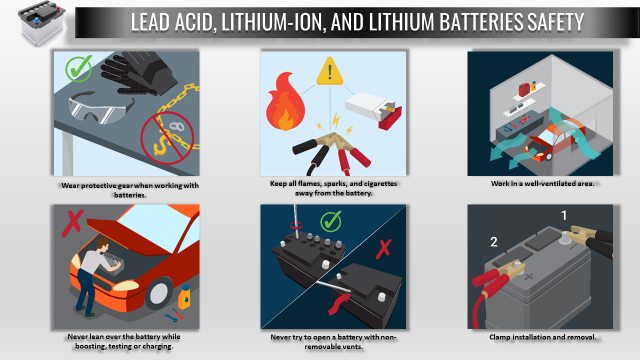A reported motor vehicle crash occurs on many roads about every 56 seconds ( Texas Roads ). More than 10% of nearly 60,000 crashes are due to driving in bad weather conditions. Rain, wind, snow, ice, sleet, fog, and more extreme weather conditions, such as hurricanes, tornados, flooding, and electrical storms, increase the risks. Postponing driving until after a severe weather system moves through the area is advised. However, for those who must drive, these tips can help drivers remain safe on the road in bad weather and reach their most important destination. Home!
Also Read: Severe Weather Plan guideline

Before Getting on the Road in Bad Weather
Proper vehicle maintenance before bad weather arrives is one of the most important steps for staying safe on the road. Old and brittle windshield wipers and dirty or damaged headlights can reduce visibility. Improper tire pressure and tread and worn brakes can decrease the vehicle’s ability to stop or remain on the road. Check this equipment often to ensure it remains in good working order.
Making a plan is another important step in staying safe in bad weather. Traveling in extreme weather conditions is often stressful and can take longer. Allow enough time to reach a destination to avoid the negative effects stress has on driving. Also, learn alternative routes to avoid possible closed roadways or impassable bridges during bad weather.
also, Read: Construction Site Traffic Management Plan (CSTMP) Guidance
While on the Road in Bad Weather
While there are precautions specific to driving in the rain, fog, and winter conditions, these safe driving behaviors can reduce roadway hazards in all types of bad weather:
- Slow down. Driving slower helps decrease skids and accidents. The Federal Motor Carrier Safety Administration advises drivers to reduce their speed by a third in bad weather. Driving slower also makes it easier to avoid pedestrians, animals, and other obstacles along the roadway.
- Leave room in the front. Brake time is slower in bad weather, so leave more room to stop. The American Auto Association recommends increasing the space between vehicles by five or six seconds during bad weather. That is double the cushion suggested during normal driving. Simply watch the vehicle in front pass a road sign or another fixed object. Count at least 6 seconds before passing the same object to ensure a safe driving distance.
- Use turn signals early. Give plenty of notice to other drivers before slowing down to take a turn.
- Listen to information about road conditions. Listen to local weather radio at a low volume during travel to stay informed of any area road closures or accidents. Stay focused and pay attention to the road.
- Buckle up. the law requires that all drivers and passengers wear seatbelts. Buckling up saves lives, especially in bad weather.
- Turn off the cruise control. The uncertainty of road conditions during bad weather requires that drivers remain in control to make necessary adjustments.
- Avoid hard braking. When braking during bad weather, the driver should remove their foot from the accelerator and lightly brake to stop. Always watch for brake lights ahead.
- Avoid sharp or quick turns. Quick driving maneuvers can lead to skids and accidents.
- Never drive beyond the limits of visibility. The glare of oncoming lights and the rain, fog, or snow on the windshield can cause temporary loss of visibility and increase fatigue.
- Pull over if needed. Feeling tired? Find a safe spot off the road to rest, particularly if the weather worsens. It is often better to wait out bad weather than push on through storms.
Rain

Rain accounts for more than 85% of weather-related roadway crashes. Hydroplaning (when tires lose contact with the road), lightning flashes, high winds, decreased visibility, and rising water levels can create deadly driving conditions. The following safety measures can help prevent roadway crashes in rain:
- Turn on the headlights. Even in daylight, use the vehicle’s headlights in rain. It helps other drivers see oncoming vehicles and increases the driver’s ability to see.
- Drive in the middle lanes. Stay on higher ground. Rainwater tends to pool on the outer edges of the road.
- Steer clear of puddles and low-lying areas. Driving into puddles or low-lying areas where rainwater collects, such as dips under rail or highway bridges or near streams, can cause vehicles to hydroplane out of control.
- Do not follow trucks or buses closely. Large vehicles can create a spray of water that can reduce nearby drivers’ visibility. Always give other vehicles plenty of room.
- Do not drive through flooded areas. When coming to a flooded road, turn around. Flash flooding and strong currents can happen quickly, often sweeping drivers off of roadways and into life-threatening situations. Never travel through water if the ground beneath it is not visible. Additionally, driving through deep water can damage a vehicle’s mechanical and electrical systems.
Hydroplaning
Hydroplaning happens when the water in front of the tires builds up faster than the vehicle’s weight can push water out of the way. The water pressure causes the vehicle to rise and slide on a thin layer of water between the tires and the road, putting drivers in danger of skidding or drifting out of the lane.

Also Read: Be Ready for Severe Weather during Construction works
How to Handle a Hydroplaning Vehicle
- Step off of the accelerator. Ease off the gas until the vehicle slows and the tire traction grabs the road again.
- Turn the Direction of the skid. Although it may seem counter-intuitive, gently turn the vehicle’s steering wheel in the direction of the skid.
- Wait to feel the tires reconnect with the surface of the road. Gently straighten the wheel as the vehicle regains control.
- Brake gently as needed. Brake normally if the vehicle has anti-lock brakes; pump brakes gently if in an older vehicle without anti-lock brakes.

Fog
Fog, or low-lying clouds at the earth’s surface, contributed to 193 crashes and 72 deaths on Texas roads in 2019.4 These water or ice droplets suspended in air can impair a driver’s ability to see and make travel difficult.

When fog decreases visibility to 0.25 miles or less, it is termed heavy fog.5 Local National Weather Service offices then issue a Dense Fog Advisory, encouraging drivers to take extra caution on the road or avoid driving if possible.6 If driving cannot be avoided, the following tips can help drivers remain safe:
- Use low-beam headlights. Whether driving in fog in daylight or at night, turn on the vehicle’s low-beam headlights and fog lights, if available. Never use high-beam headlights, which reflect light off of the fog making it harder to see.
- Turn on emergency flashers. By turning on the flashers, vehicles are more visible to other drivers approaching from behind.
- Use the right edge of the road as a guide. When visibility is low, drive using the white reflective line on the
- side of the road as
- a guide. This helps keep the vehicle in its lane and protects the driver from the glare of oncoming headlights.
- Do not change lanes. Fog can make it difficult to see, so avoid changing lanes or passing vehicles. Always watch for slow-moving and parked vehicles.
- Pull to the side of the road if visibility decreases. Drivers who cannot see in fog should pull off the road with their flashers on. If possible, pull into a rest area or truck stop for added safety.
Sleet, Snow, and Ice
While not known for winter weather, Texas does experience sleet, snow, and ice storms that can make roadways hazardous and unpredictable. The following tips can help keep drivers safe when staying off the roads in extreme winter weather is not an option.
- Winterize the vehicle before getting on the road. Check to ensure the vehicle’s antifreeze, windshield washer fluid, and oil are appropriate for winter conditions. Check the battery, wipers, ignition system, thermostat, headlights, hazard lights, exhaust system, heater, brakes, defroster, and tires to make sure they are properly maintained and in good working order. Keep the gas tank full.
- Use caution when driving on bridges and overpasses. Elevated roadways, such as bridges, ramps, overpasses, and shaded areas are the first to freeze in cold weather.
- Beware of black ice. Black ice – a thin, transparent layer of ice on a roadway – can cause drivers to lose control of a vehicle quickly. Watch the road ahead and try to avoid driving over areas that look slick.
- Stay in the vehicle if stranded. Do not attempt to leave the vehicle if stranded. Carry a charged cell phone or two-way radio. Call for help and remain in the vehicle until authorities or other assistance arrives.
- Carry an emergency kit and a survival pack. All vehicles traveling in winter months should carry emergency kits and cold-weather survival packs as outlined by the National Safety Council and the Department of Homeland Security
Correcting a Skid on Snow or Ice
- Test brakes. Vehicle brakes perform differently in snow and ice than on a dry road. Know how the vehicle’s brakes perform by practicing in an empty parking lot in advance. Test how the vehicle reacts to pressure applied to the brake pedal.
- Stop accelerating. In a skid on ice or snow, drivers should remove their foot from the accelerator, which stops the vehicle’s wheels from spinning.
- Do not slam on the brakes. Gently pump the brakes to avoid further skidding on the road.
- Steer away from the skid. In snow and ice, steer the vehicle in the opposite direction of the skid to correct the vehicle’s position.
- Do not oversteer. Oversteering can make drivers lose control.
Winter Weather Alerts
During winter weather, local National Weather Service offices issue outlooks, advisories, watches, and warnings to help drivers prepare for extreme temperatures and weather conditions.

- Outlooks are issued before a winter storm watch when forecasters believe winter storm conditions may develop. It is intended to allow people time to prepare for a weather event.
- Advisories are issued when winter weather elements are produced that are not expected to be hazardous enough to meet warning criteria. Be prepared for travel difficulties and use caution when driving.
- Watches are issued usually at least 24 to 36 hours in advance when conditions are favorable for a significant, hazardous winter weather event. However, an event’s occurrence, location, or timing is still uncertain. This scenario can make travel dangerous.
- Warnings are issued when significant, hazardous winter weather is occurring or imminent and poses a threat to life or property. Travel will become difficult or impossible, so delay travel until conditions improve. If a driver must travel, carry a winter survival kit. If stranded, stay in the vehicle, and wait for help to arrive.




